Nothing stands out against dark green leaves quite like bright white blossoms. If you’re looking for a new tree for your Texas yard, consider one of these amazing white flowering trees.
Magnolia
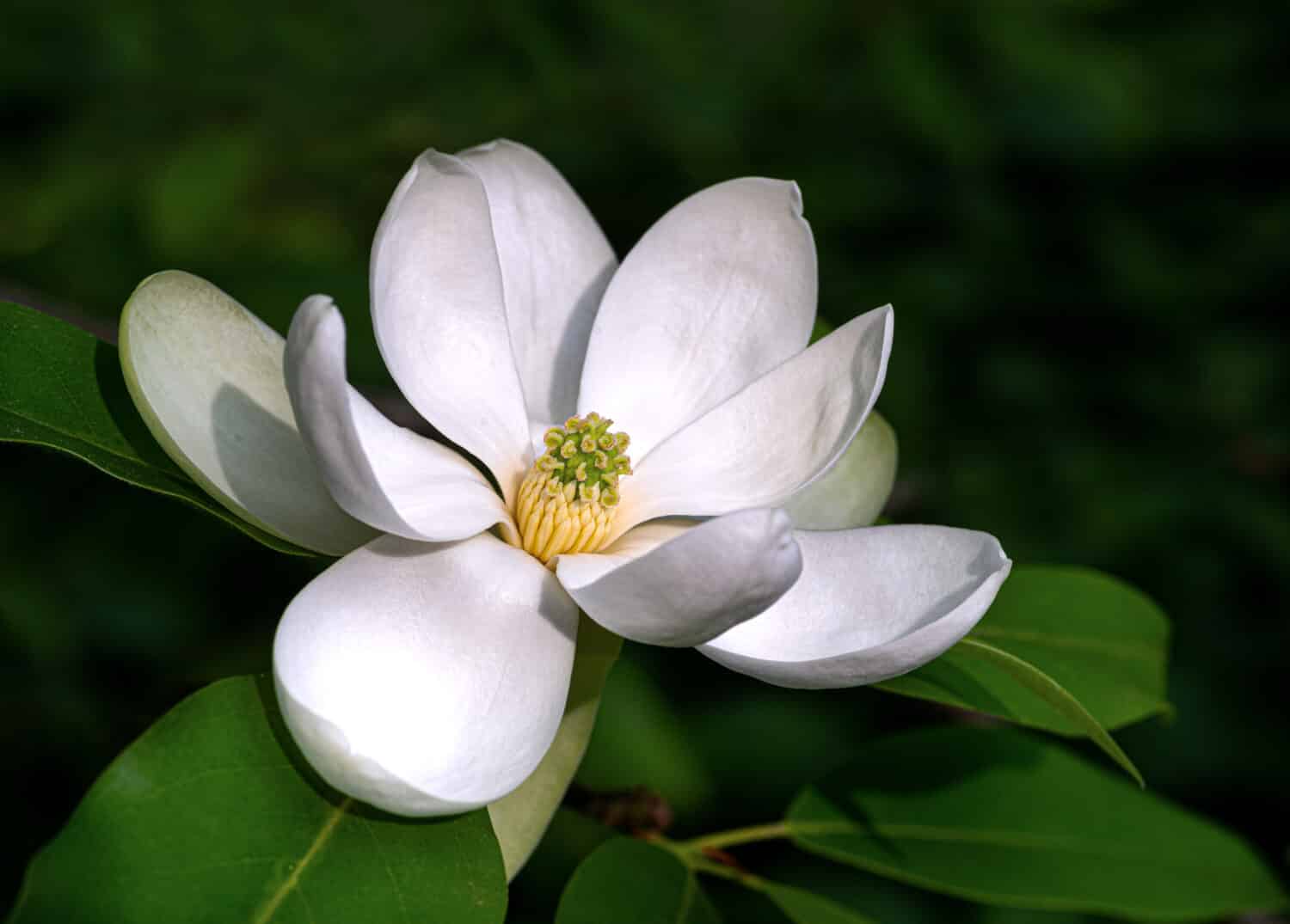
Magnolia blossoms are large and gorgeous!
©Gerry Bishop/Shutterstock.com
A classic symbol of the South, magnolias are some of the most gorgeous white flowering trees. They produce large blooms that smell amazing and look beautiful. Best of all, they grow easily in Texas since they’re native to the state. You’ll want to plant magnolias in full sun and water them consistently in the first few years, but as they grow they’ll require less care.
Crape Myrtle
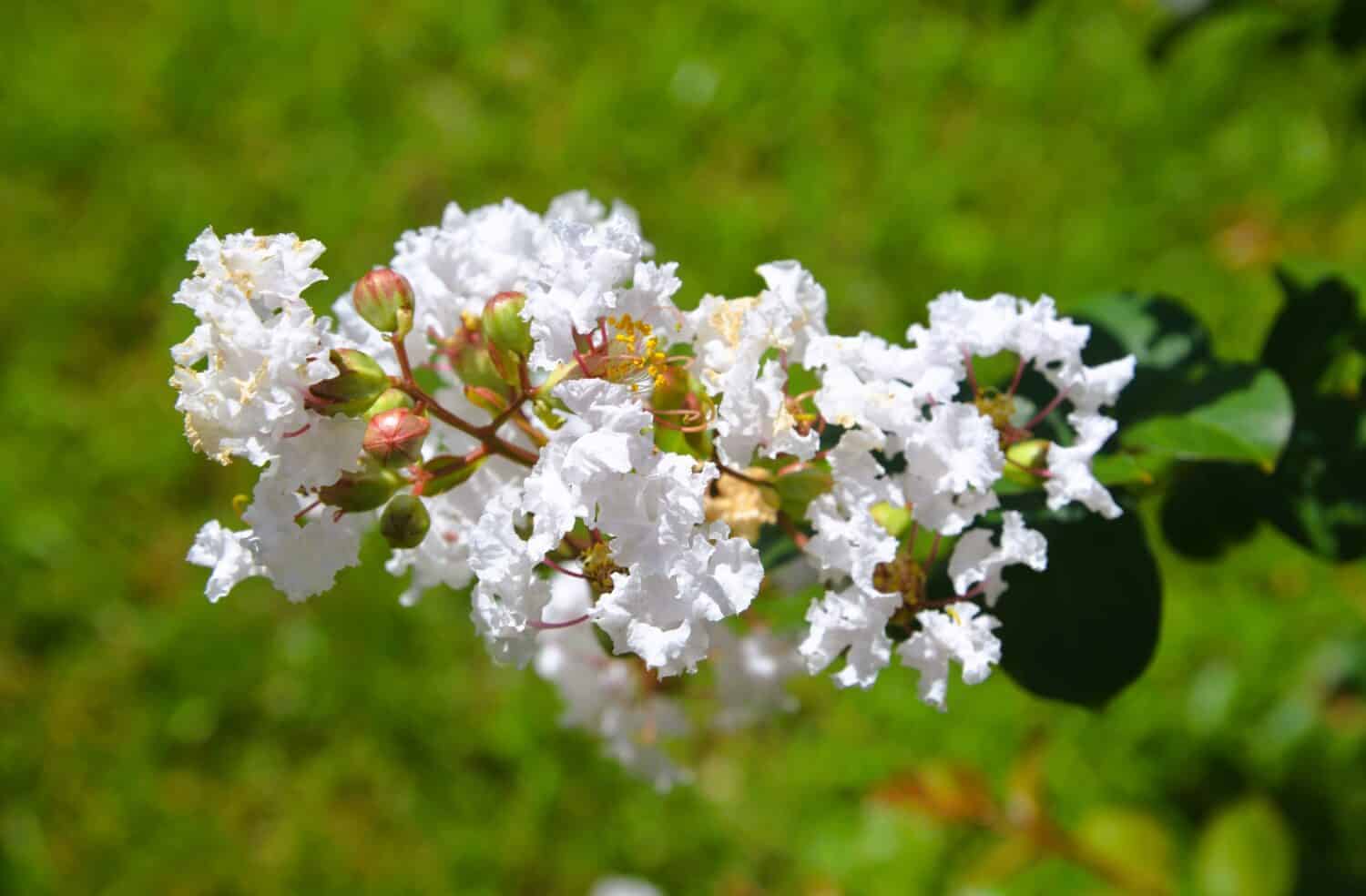
The blossoms on crape myrtles grow in clusters at the ends of branches.
©Shelia R. Wiseman/Shutterstock.com
Crape myrtles come in many colors, but one of the most beautiful selections is white. Crape myrtles aren’t too picky in terms of soil but require and thrive in full sun. They’re great for lazy gardeners since they’re one of the hardest trees to kill!
Mexican Plum

Plum trees offer beauty and then edible fruit after they bloom.
©Akif CUBUK/Shutterstock.com
Consider a Mexican plum if you’re looking for a tree that offers more than just gorgeous flowers. The tree is native to Texas and produces pretty white flowers in the spring which turn to edible plums that ripen in early fall. The fruits are edible for people and animals, adding a food source to your yard.
Flowering Dogwood

Dogwoods are deciduous, so their flowers grow directly from the bark.
©atonom/iStock via Getty Images
Another classic southern tree is the flowering dogwood, which grows well in most of eastern Texas. Flowering dogwoods do best in the shade of other trees and usually grow wild in deciduous forests.
Bradford Flowering Pear
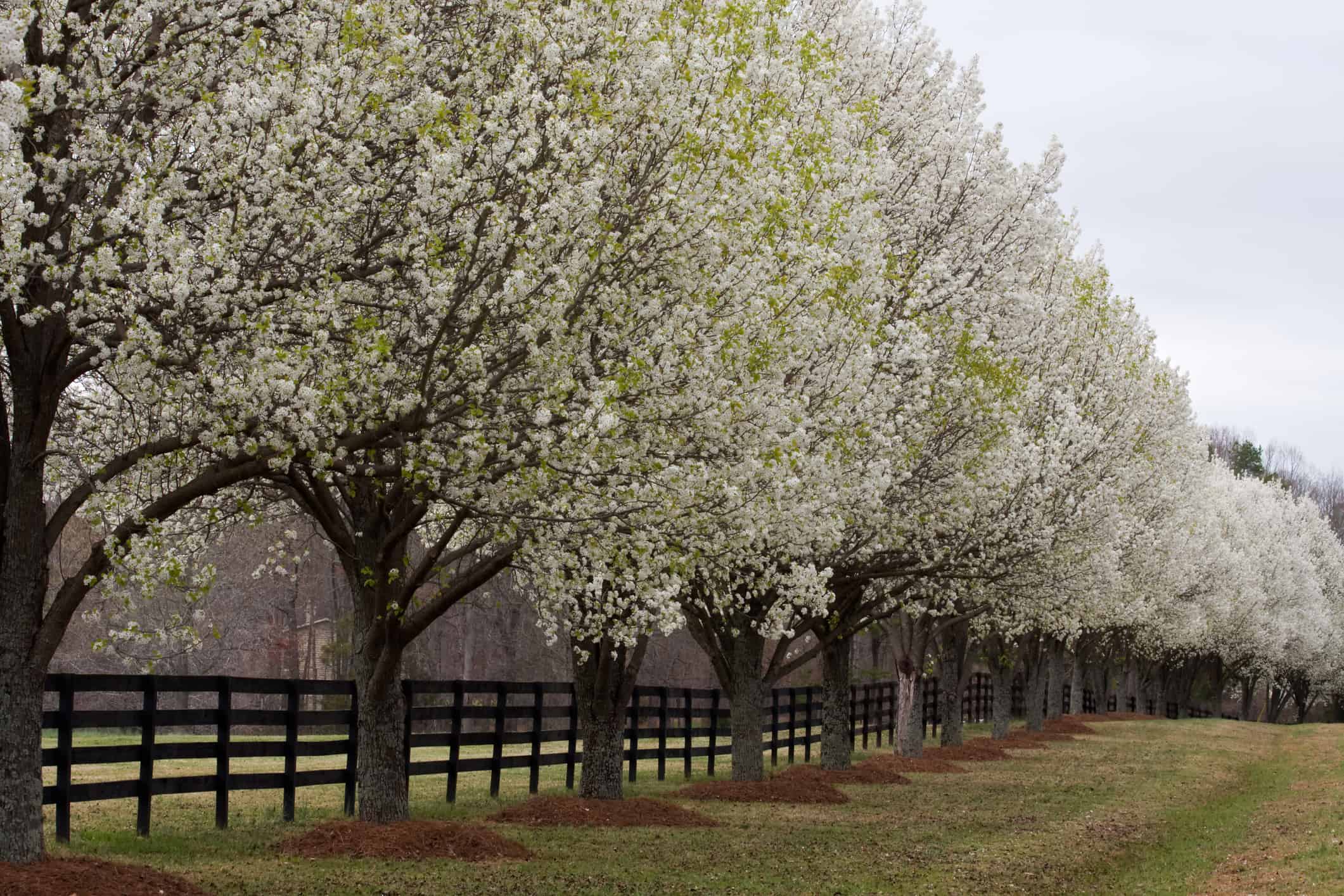
These flowering trees look snow-covered from a distance.
©iStock.com/JillLang
Bradford flowering pear trees are some of the largest options when it comes to flowering pear trees. They can grow up to 30 feet tall and produce flowers that cover the tree. However, Bradford flowering pears have an invasive nature, spreading quickly and easily through seed. Some people also believe they have an undesirable scent that compares to mold and dirty diapers.
Chinese Fringe Tree
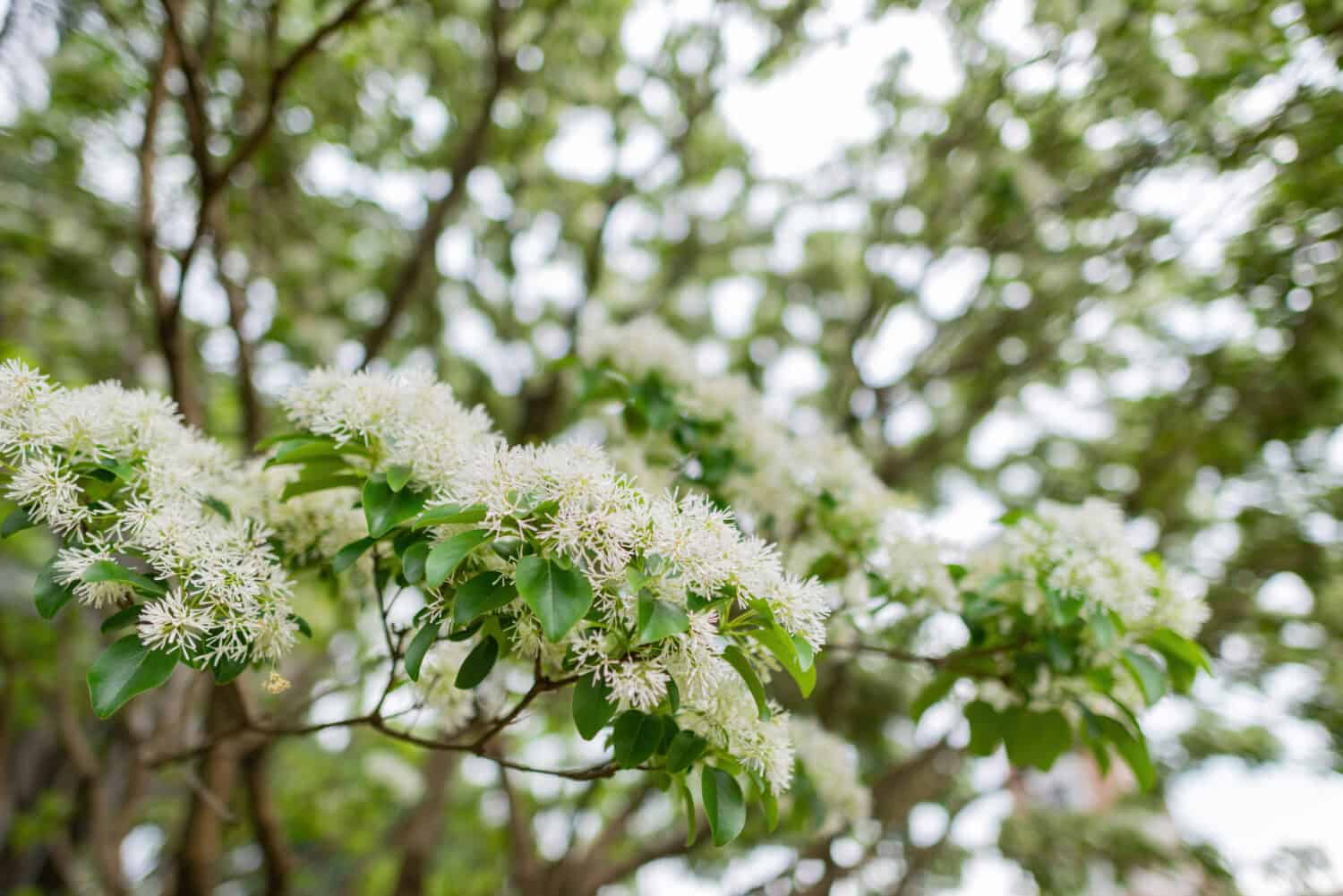
Chinese fringe trees are named for their fringe-like blossoms.
©Kit Leong/Shutterstock.com
This amazing tree becomes covered in a blanket of blossoms each spring that leads to berries in the fall. While they aren’t edible, they add a food source for birds and other critters that live in your yard. It’s low maintenance, accepting full sun to partial shade and pretty much any soil type.
White Oleander
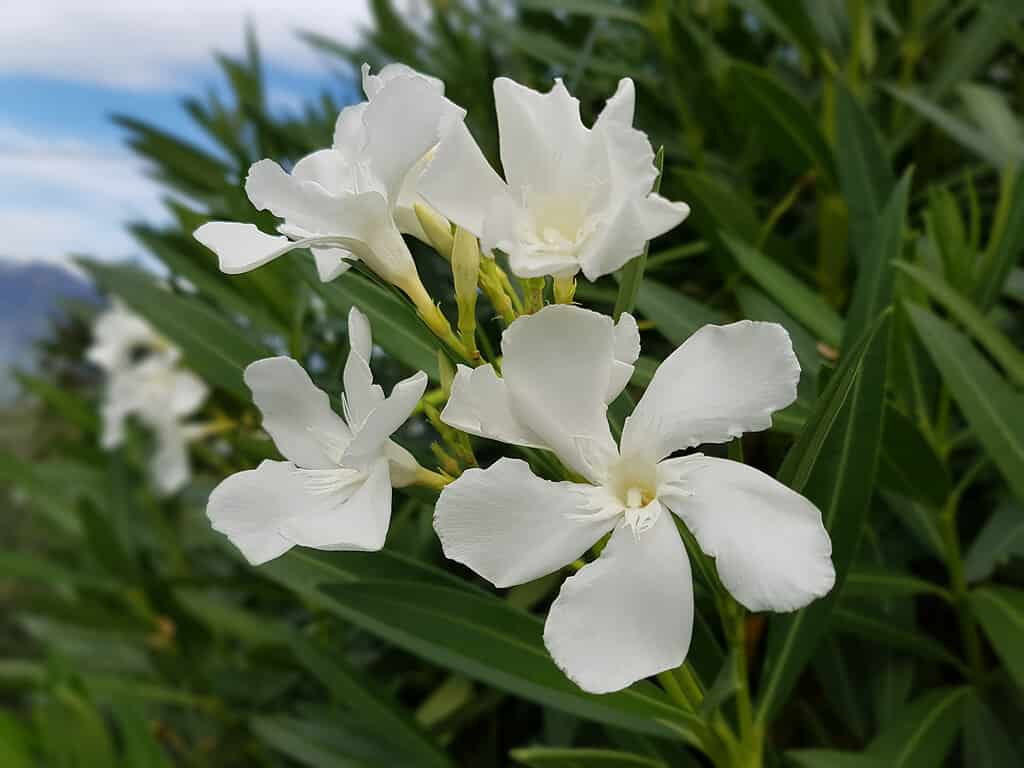
Though pink is the most common option, oleander flowers also come in white.
©emer1940/iStock via Getty Images
Oleander is a gorgeous small tree that can be grown both indoors and out. It’s a popular potted tree and will live for around 20 years inside. Like regular oleander, the white-flowering variety is also toxic, so take care when growing it around pets or children. Oleander does well in various soil types and with direct or indirect sunlight.
Anacua Tree

The blossoms of the anacua tree are small and star-shaped.
©Vipul1989/Shutterstock.com
Anacua is a native tree to South Texas, reaching north as far as Austin. A warmth-loving tree, anacua won’t flower in colder locations, but it will grow in nearly every part of Texas. It produces small white flowers that give way to orange fruits in early summer.
Desert Willow

Desert willow blossoms fade from pink to white.
©MelloDharma/Shutterstock.com
Another native Texas tree, the desert willow is small and delicate, with long, thin leaves. Despite being called a willow, they aren’t in fact related to the willow species, Salix. Desert willows grow up to 20 feet and tolerate many soil types.
White Redbud
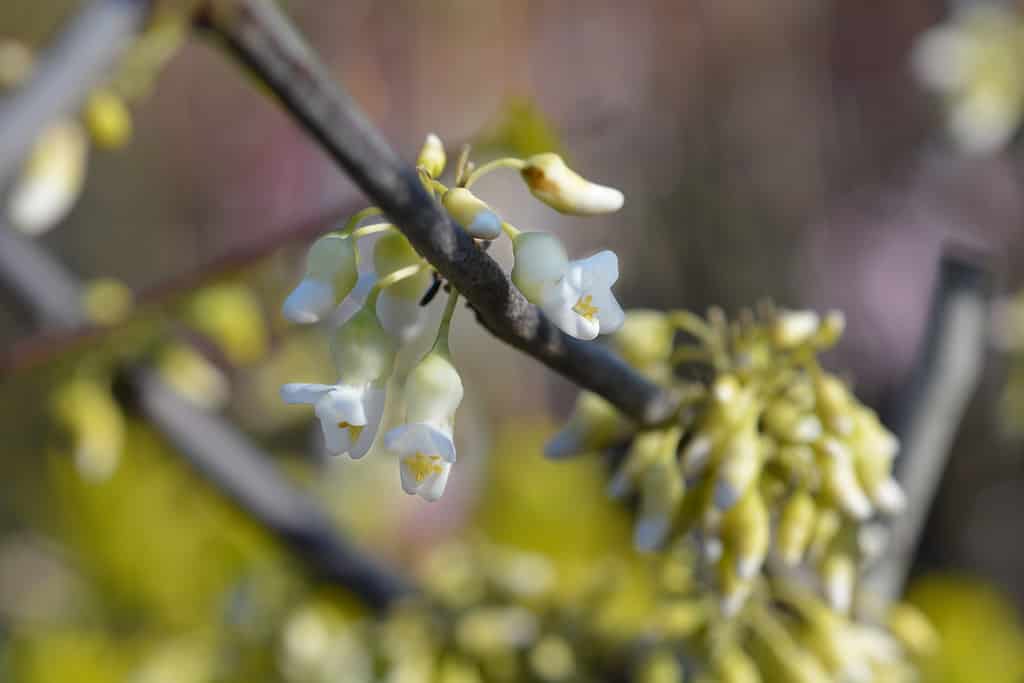
The flowers grow in clusters on the branches.
©Nahhan/iStock via Getty Images
White redbuds create some amazing blooms, especially since they’re deciduous so the flowers grow directly on the branches. The white flowers are tiny but intricate, and they make the tree stand out in spring against all of the greenery.
Two-Wing Silver Bell
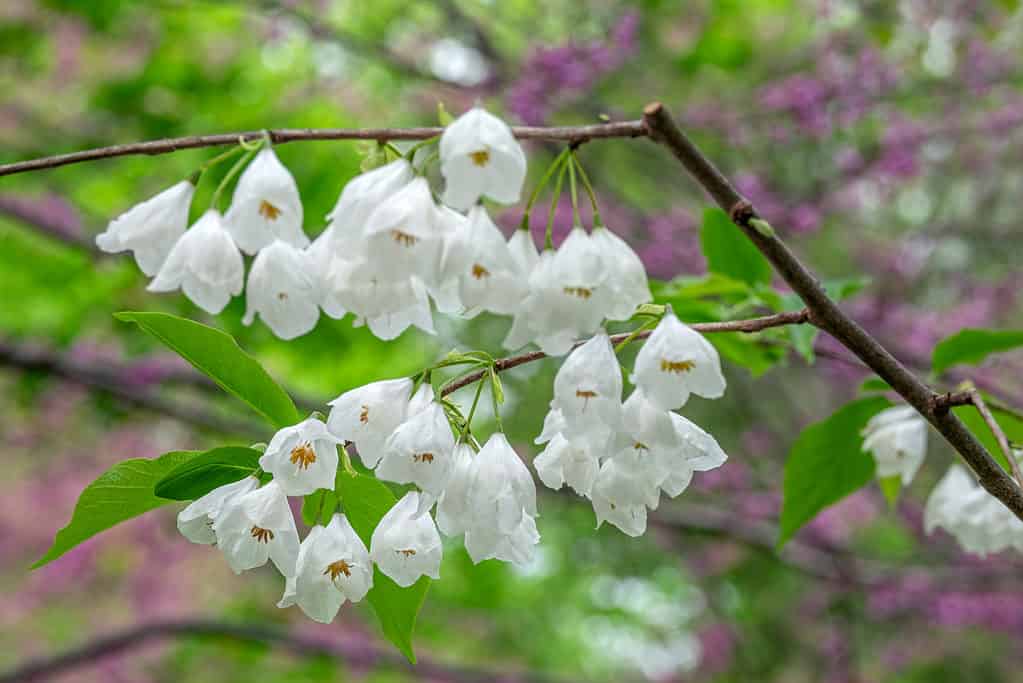
It’s easy to see how they got the name ‘silver bell’.
©Danita Delimont/Shutterstock.com
The two-wing silver bell tree is native to southeast Texas, but it will grow across most of the state. Its white flowers hang down and shine like silver bells, hence the name. It’s an elegant tree that can reach up to 30 feet.
Prairie Crabapple

The crabapple blossoms smell great and look beautiful.
©Nicolas Propes/iStock via Getty Images
Native to Texas, the prairie crabapple produces sweet-smelling blossoms that range from light pink to white. Like the name suggests, the trees produce crabapples that serve as food for wildlife. They can reach up to 20 feet and are very adaptable in terms of soil.
Texas Madrone

This desert evergreen makes yellow-white flowers in the spring.
©Wildnerdpix/iStock via Getty Images
Texas madrone is an evergreen that’s native to Texas. The trees produce small white flowers that are urn-shaped. Texas madrones grow to an average height of 25 feet.
Texas Hawthorn

Texas hawthorn flowers are beneficial to polinators.
©Marianne Pfeil/Shutterstock.com
A part of the rose family, Texas hawthorn trees are gorgeous deciduous trees that grow up to 30 feet tall. They produce white flowers that grow in clusters in early spring. They are native to Texas and are beneficial to the local bees.
Mexican Ash
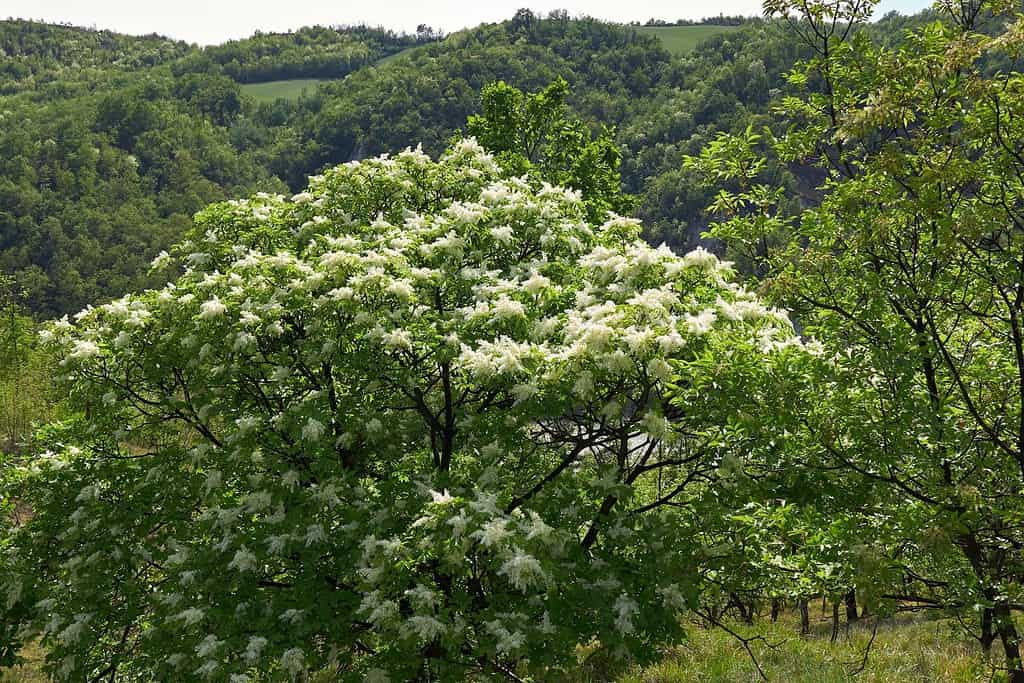
The trees produce a large layer of white blossoms.
©simona pavan/Shutterstock.com
Mexican ash trees are native to Texas and Mexico, growing well in any soil as long as it’s dry. The fast-growing trees will reach up to 40 feet tall and produce small white flowers in clusters. The leaves are consumed by caterpillars, and the fruits are eaten by birds and other wildlife.
Mexican Olive
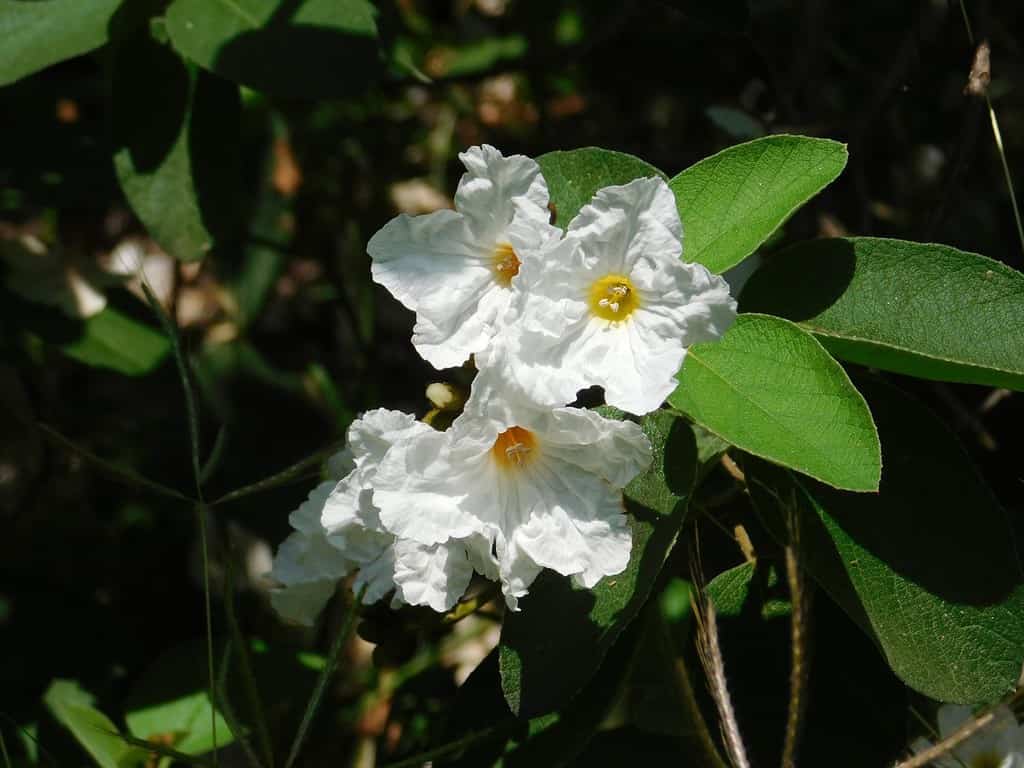
Mexican olive flowers are naturally crinkled, appearing paper-like in bloom.
©Vicki Craig 85/Shutterstock.com
The Mexican olive or Anacahuita is a medium-sized trees, growing up to 30 feet tall. It has large, dark leaves and large, white flowers with yellow centers. It’s native to south Texas, but can grow as far north as Austin because of its intolerance to the cold.
Viburnum
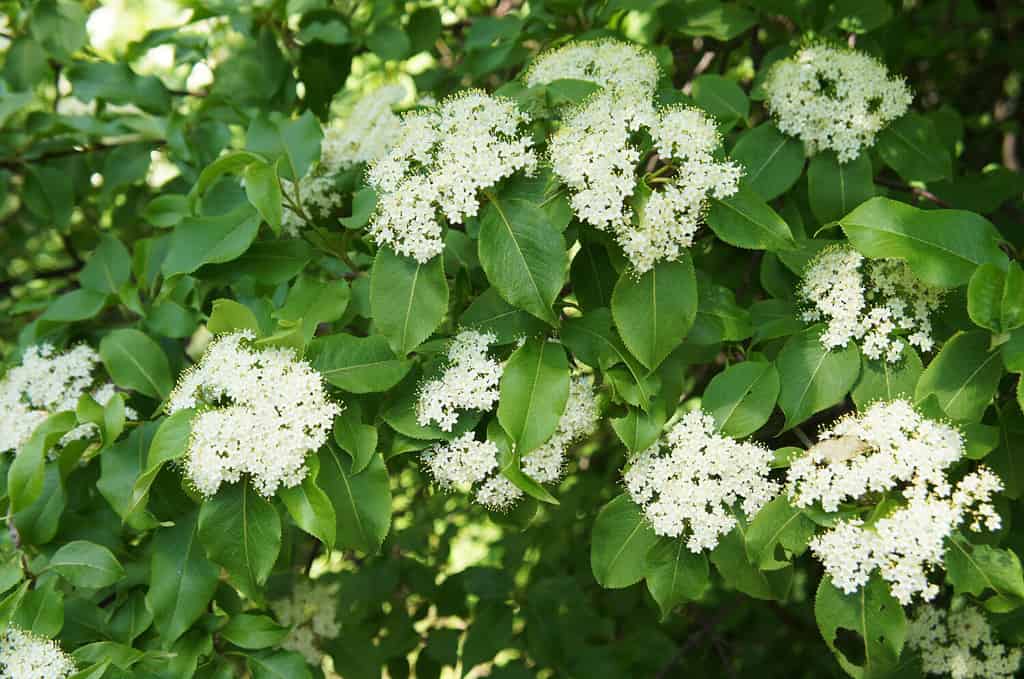
Rusty viburnum trees produce beautiful white flowers.
©mizy/Shutterstock.com
Most viburnum trees will grow well in Texas, but Rusty Blackhaw viburnum does especially well in terms of showy flowers. Its flowers are tiny but clustered together, appearing larger from a distance, and the leaves are waxier than other viburnum varieties.
Catalpa
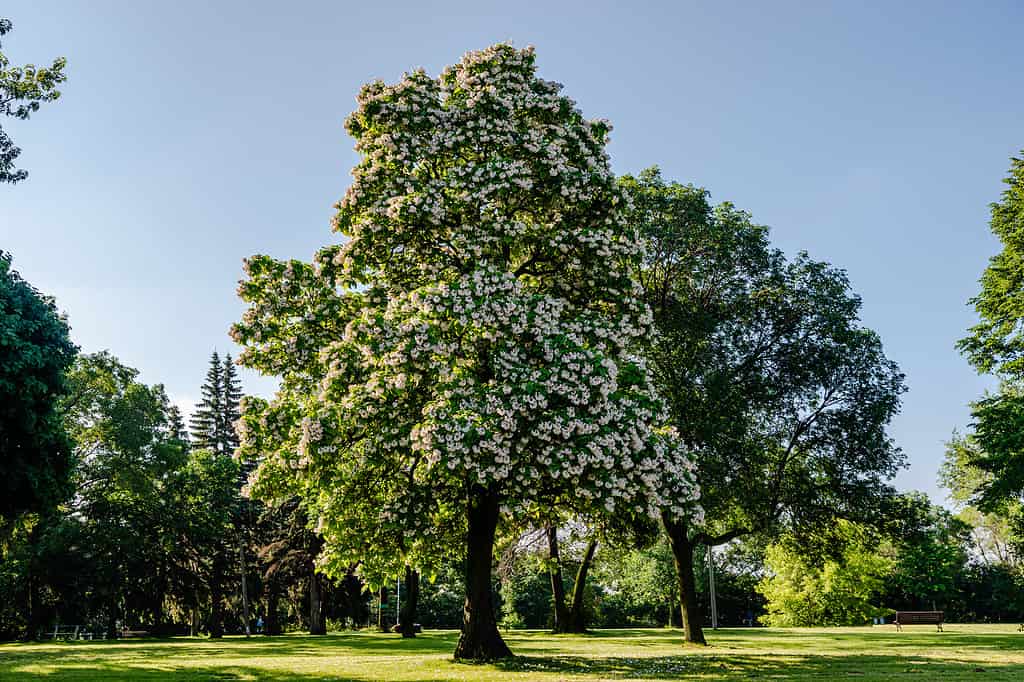
Catalpas grow tall and have showy blossoms that cover the tree.
©Pito Fotos/iStock via Getty Images
Northern catalpa, also called the cigar tree, is a very large (75-100 foot) tree that is native to the eastern U.S. It now grows in nearly every U.S. state. Catalpa is fast-growing and produces white bell-shaped flowers in the late spring.
The photo featured at the top of this post is © Iva Vagnerova/Shutterstock.com
Thank you for reading! Have some feedback for us? Contact the AZ Animals editorial team.






